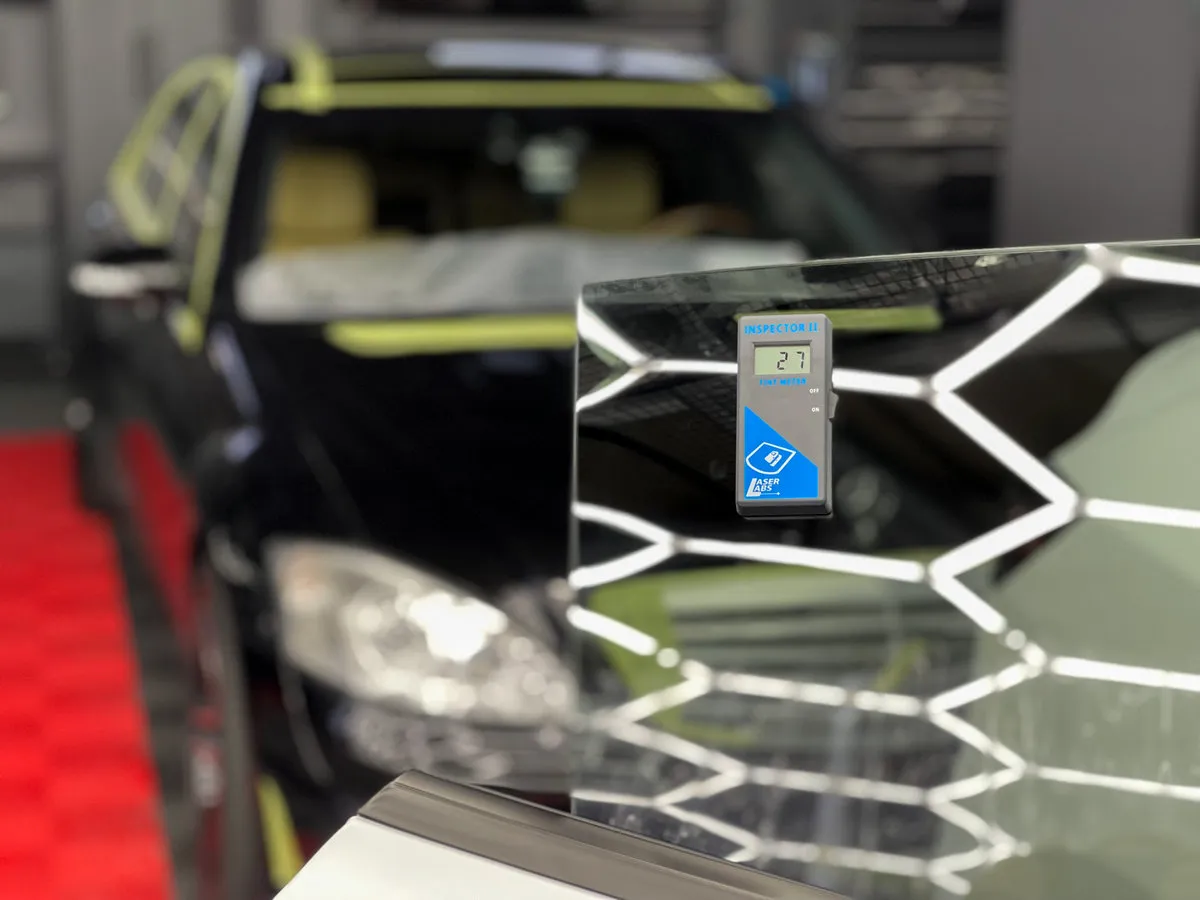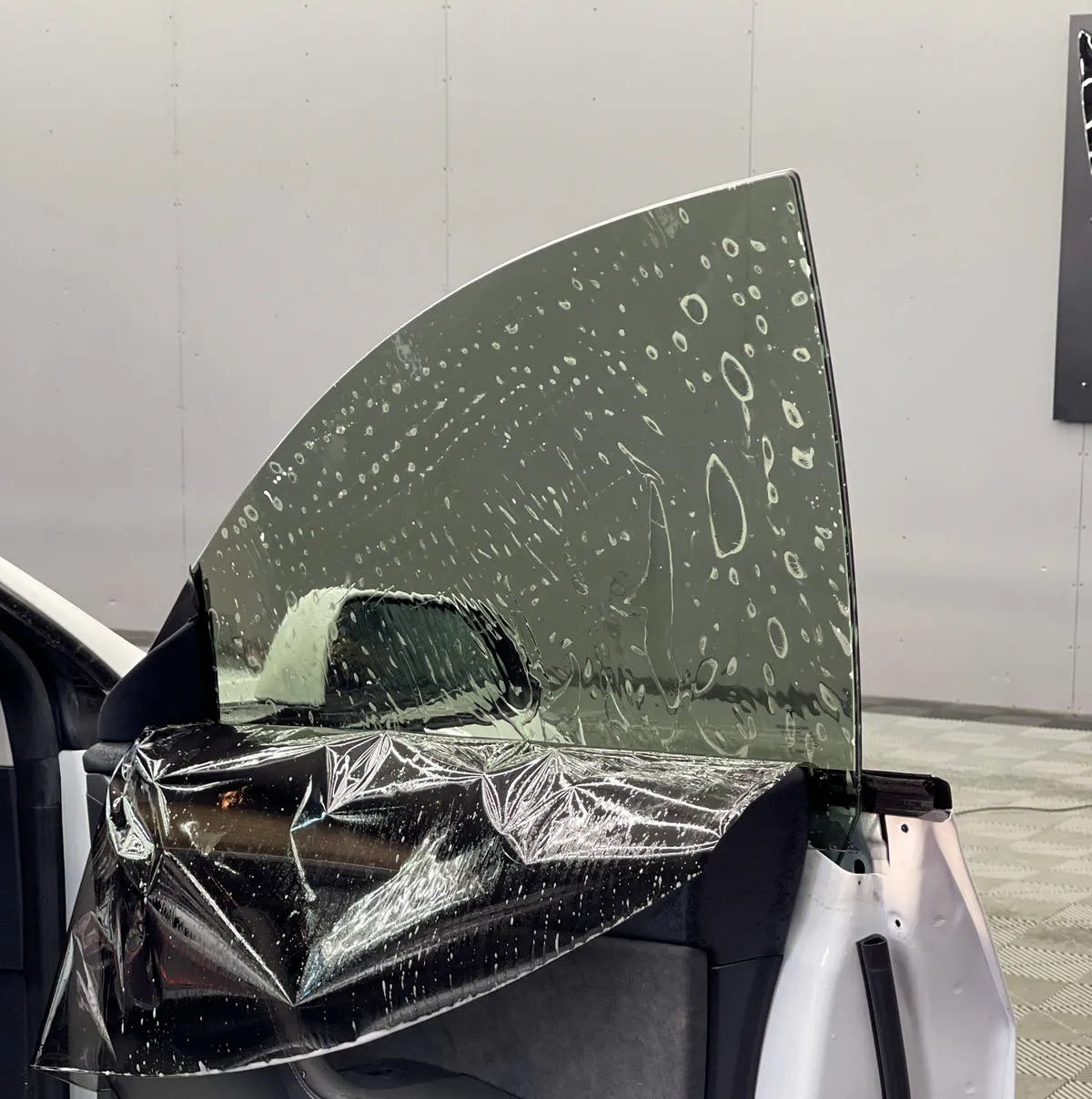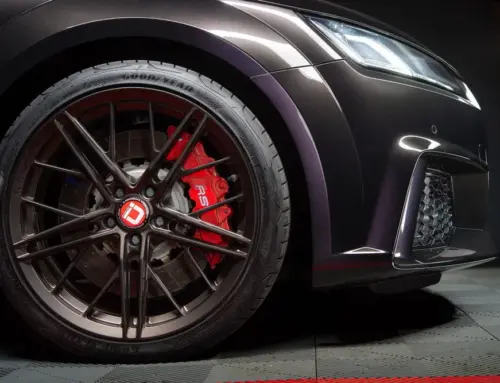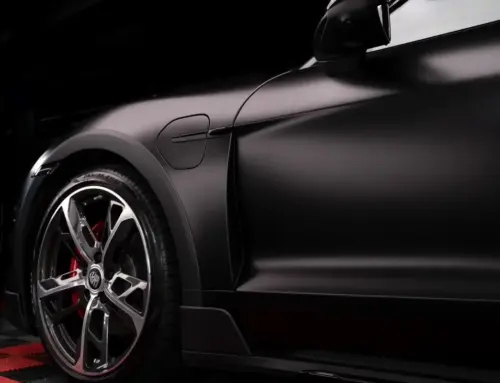Is front windshield tinting illegal? Will it pass inspection if there are films on the windows? What degree of light transmission is allowed on front windshields? Who has the smallest risks?
Front windshield tinting is a very popular service. However, many hesitate about its legality and safety. Some get it done without ever receiving any warnings, while others do. Why are there such varying experiences?
To begin with, we kindly note that tinting front windshields is completely illegal. We do not in any way diminish the importance of adhering to the law, nor do we recommend anyone to act against it. On the contrary, we advise compliance with the law, always. No films are allowed on the front windows, not even transparent ones. Instead, we share the experiences of several hundred of our customers, which may assist those considering tinting their front or windshield windows.

Law
Tinting of front doors and windshields is extremely popular for both aesthetic and health reasons. The contrast between tinted rear windows and untinted front doors disturbs many and makes the car look unfinished.
According to the Finnish Ministry of Transport and Communications law:
Section 16
- The light transmittance of the windshield must be at least 75%, and the light transmittance of the front side windows and the rear window of a passenger car must be at least 70%. Post-installation films or any other modifications or coverings that reduce their light transmittance must not be used on the windshield and front side windows. Similarly, films or modifications that may cause harmful reflections must not be used on other windows.
- If visibility to the rear is reduced due to structural changes, a right-side rearview mirror providing sufficient rear visibility must be installed in the vehicle. A tinting film may be installed on the rear window of an M1, M1G, N1, or N1G class vehicle, even if the light transmittance of the rear window with the tinting film is below 70%. If a tinting film is installed on the rear window of an M1, M1G, N1, or N1G class vehicle, a right-side rearview mirror providing sufficient rear visibility must be installed in the vehicle. If a mandatory center brake light is installed on the rear window of the vehicle, it must not be covered with a tinting film.
In other words, tinting of front windshields with films is completely illegal.
In Finland, even a transparent clear film is illegal, and we have encountered this a few times with cars imported from Germany, where customers were instructed to remove 100% clear film during registration inspections.
For example, in Central European countries, law enforcement officers use a tint darkness meter on the road, which reads the amount of light transmitted as a percentage. According to the latest information available, law enforcement in Finland visually inspects the film and scrapes it off if necessary.
Regardless of the law, 91% of Restyling Point’s customers who tint their rear windows also opt for tinting their front doors.
And 25% of customers opt for mild tinting on the windshield.
A relatively large number, considering the prohibition imposed by the law.
Factors affecting inspection situations
There are factors that, if anticipated and adhered to, may reduce the likelihood of a fine or inspection remark and may positively influence and reduce risks:
1. Installation method and darkness of films
The darkness of the film is the most visible evidence of tinting on windows. In other words, it is not advisable to choose the darkest possible film solely for safety reasons, not to mention the aesthetic appearance of the car and the risk of films being clearly visible on front doors.
The most common darkness level chosen by customers for front doors is 35%, and for windshields, it’s 50%. And as shown in the image, these are not the lightest versions. The lightest is 70%, which is only chosen for the windshield. This clearly indicates that people are receptive to tinting on the front of the car, regardless of the law.

The installation and finishing method of the films is another factor that affects the decision-making of the inspector or law enforcement. When there are significant amounts of dust or “bubbles” between the film and the glass, and especially when there is a traditional gap of several millimeters between the top edge of the glass and the top edge of the film, the inspector’s decision may result in a fine or a remark for the car owner.

The finishing of the top edge of the film on the front doors should be done meticulously to ensure there is no gap between the film and the top edge of the glass. Instead, the film should extend all the way up and be cut diagonally along the top edge of the glass. In frameless doors, the side edges of the glass are also important.

Specifically, with the right installation method and properly executed film “shearing” technique, the inspecting individual won’t find the edge of the film they’re looking for. Many customers have recounted inspection situations where the police attempted to verify the presence of the films by visually searching for the edge of the film and scratching with a fingernail, but couldn’t find it. As a result, the driver continued their journey without a fine, and with their front windows still tinted. We haven’t heard of law enforcement using a measuring device that measures the amount of light transmission and displays it as a percentage, as in other European countries.

2. Tinting of Rear Windows
The darkness level of the rear windows affects how easily the films are visible in the front windows. If, for example, the rear windows have a tint of 15% and the front doors have 25%, the difference is minimal, and simply looking from afar can confirm that the front windows are tinted.
However, if the rear windows are tinted at 15% and the front doors are tinted at 35%, 50%, or even 70%, the difference is clearly visible, reducing suspicion that the front windows are tinted.
If you’re unsure about choosing the tint shade, check out our guide for easy decision-making: restyling.fi/en/blog/4-tips-shade-window-tinting

3. Age and General Condition of the Car
If you have a new car, the first inspection is only due after three years. Therefore, you can drive with tinted front windows for three years, and the only situation where tinting might be noticed is on the road. Or at home, when your spouse notices them! 😁
The general condition of the car affects whether inspectors intervene with the tinting during inspections. Based on the experiences shared by hundreds of our customers, other found faults on the car and the overall cleanliness of the car influence whether the inspector bothers to mark tinting as a corrective action or adds the presence of tinting films as an extension of other faults.
Learn how to keep your car in mint condition: restyling.fi/en/blog/new-car-ppf-protection-guide
This theory is not legally justified but rather based on the experiences shared by our customers.

4. Driver’s Residential Area and Driving Habits
Although the law applies uniformly across the country, it’s hard not to notice that enforcement of tinting regulations, especially in smaller towns, is more common than in metropolitan areas like the capital region. This can be explained by the fact that in larger cities, law enforcement has other priorities than intervening in minor issues.
If you drive within the speed limits and don’t attract attention to yourself, there’s a significantly lower chance of being stopped for tinted windows.
The most commonly used tint darkness level for front windows is 35%. This fact partially reflects people’s attitudes towards front window tinting. 35% is a medium-dark film, and there are two lighter shades available. The 50% film is used significantly less on front doors because it’s so subtle compared to the 35% film.
In 2022, we introduced a 70% film, which is even safer and still adds a touch of stylish appearance to the vehicle.

Windshield Tinting
The most popular shade for windshield films is 50%. It’s the second-lightest shade and is the maximum we recommend for windshields. Safety is a crucial criterion, which is why darker shades aren’t recommended. Especially during winter when the amount of light is low, it’s not advisable to install a darker film on the windshield beyond 50%.
A 70% film is an excellent option for windshields because it poses the lowest safety risks and makes the car look less like an aquarium.
The darkest film we’ve installed on a windshield was 25%, with 15% on the front doors, and the customer knew what they wanted. A week later, the customer reported being stopped for tinting violations.
One fact worth mentioning about windshield tinting is that because windshields are tinted much less compared to front doors, law enforcement and inspection stations are not yet accustomed to this, so they may not know how to inspect windshield tint films.

Benefits
Even though tinting front windows is illegal, there’s a rational explanation for their popularity. Films enhance driving comfort on sunny days by blocking 99% of UV rays and around 50% of solar heat. This prevents skin exposure to harmful UV radiation, avoiding the infamous “trucker’s tan”.
Most window films worldwide, even transparent versions, block 99% of UV radiation. This is the most common basic standard in window films.
The primary motive for tinting front doors and windshields is improved car aesthetics and personal privacy. The car looks polished with tinted front doors.
A less desirable but noteworthy aspect is during a traffic accident when impact comes from the side, and thanks to the film, the shattered glass remains intact. The film acts as a laminate and prevents glass shards from falling.
A stylish car appearance comes from carefully executed tinting.
Drawbacks
- The drawback, of course, is the illegality of tinting the front windows of the car and the consequences that follow. A roadside fine of €70 or immediate removal of the films are the most common options. A written warning during inspection is also possible.
- Visibility decreases when looking out from the inside of the car through tinted films because the films reduce the amount of light entering. Visibility affects safety. Therefore, we never recommend darker films than 35% for front doors and a maximum of 50% for windshields. Visibility from the inside out is poorest, especially in winter evenings, requiring more concentration and vigilance.
- How well other drivers can see your alertness, reactions, and eye contact affects the traffic safety of other motorists.
- In a traffic accident scenario, theoretically, the presence of tints in the vehicle may affect the innocence of the innocent party. This has not been officially verified; it’s just an inference.
Summary
If you have a new car, you have the lowest risk of receiving a notice about the films because the inspection is not due for another three years. Avoid installing too dark a film in the front to avoid compromising visibility and safety.
Driver visibility affects safety, and front window films on sunny days prevent glare and slightly reduce visibility during winter nights.
Consult with the installation company for a sensible and stylish tinting solution. If you accidentally choose a film that’s too dark, it can always be replaced with a lighter one.
Do you want the job done responsibly, on time, and with the best value for your money? Ask for a quote from Restyling Point’s professionals, who do this with quality standards, values, and love.
On WhatsApp: +358445050624
By Phone: +358445050624
By Email: [email protected]
Restyling Point Ltd – Leading in wrapping and protection treatments in the Nordic countries











